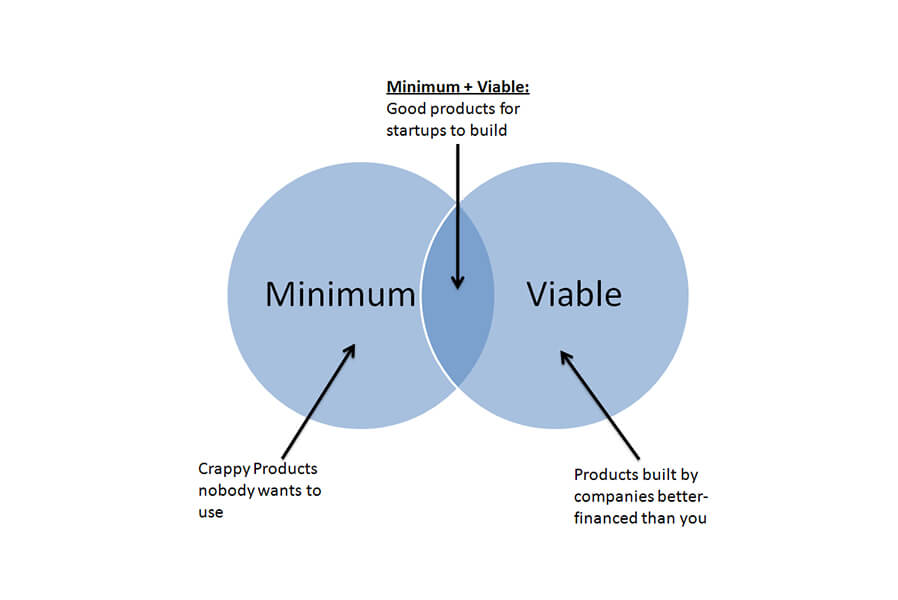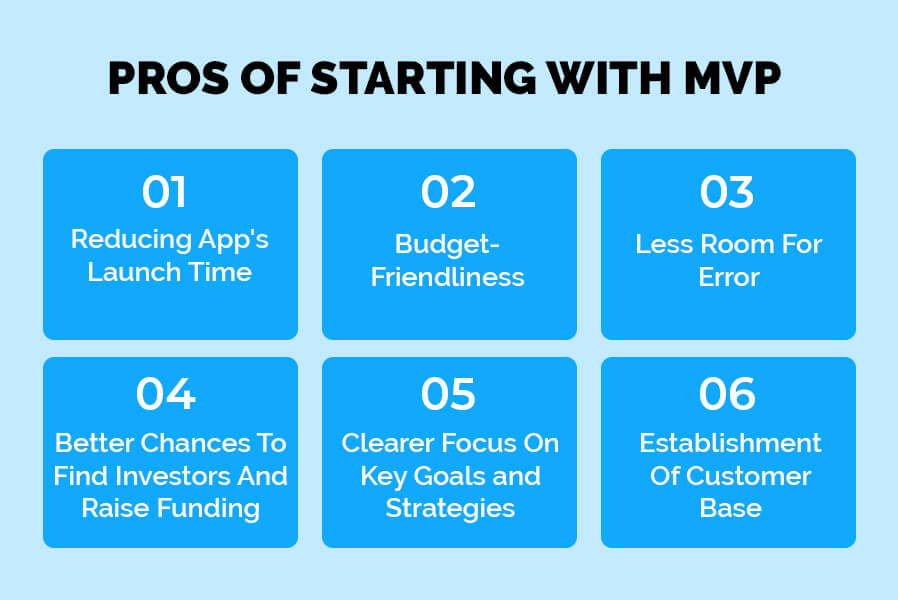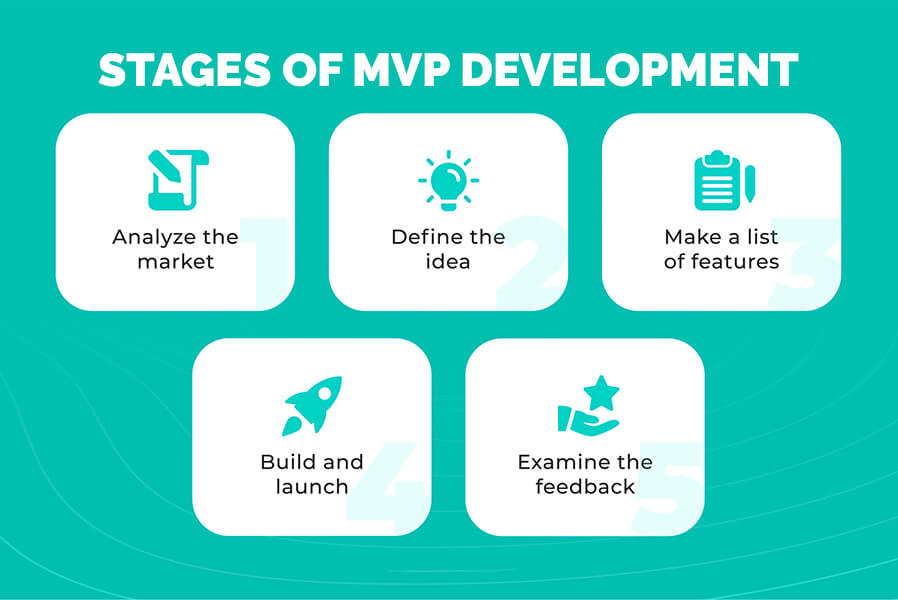MVP in Software Development – Business Benefits and Development Approach

A unique idea is the root of all application developments - a concept that can revolutionize an audience. Alas, we have seen far too many passionate entrepreneurs invest their time, energy, and money into a product only much later realizing that they are trying to solve a problem that no one has. Being a product owner involves ensuring that the solution is developed according to the fundamental needs of people. Therefore, to determine if your product will be marketable, you should first create a Minimum Viable Product (MVP).
What is a Minimum Viable Product (MVP)?
A Minimum Viable Product (MVP) is an application that allows you to test your product and then make changes to it continuously according to feedback received before it is released. Using the smallest effort, you can collect the greatest number of valid learnings about your customers.
An MVP consists of the following: –
- Value Proposition
The main reason why a user needs the product. - Customer Segment
A set of target users who will give the most helpful feedback on the value proposition. - Channel
The path to reach the target users. - Customer Relationship
Understand the effectiveness of your product in solving an end-user problem and modify it to maintain customer loyalty.
Finding the Balance Between Minimalism and Viability

- Minimum
A product with not even the most essential features. - Viable
A feature-rich product, more features than what serves the purpose of the product. - Minimum and Viable
An MVP is the perfect balance of minimum and viable, offering the most value to its end-user.
Why MVP Is So Significant?
A minimum viable product serves as a safety net and helps predict the product's commercial and technical capabilities once it is in the hands of the customer. The MVP model makes it possible to take technical and business decisions based on facts and not speculation.
Product testing in the target market is the basis of the creation of an MVP. MVPs can reduce the amount of uncertainty in a team. A project team can forecast the demand for planned software by creating a product that resembles the final product and sharing it with users. By doing so, they can plan the entire process with unprecedented precision, and find out which improvements would enhance the efficiency and ease of use of the final product.
Let's look at some more reasons why an MVP is important.
-
Sets the path for the design
Developing an MVP app is more than just validating the concept; it gives the development team insight into what features and interface elements users expect. We will be able to utilize all collected data to develop and design our software and meet the needs of our audience. -
Validate the app functionality
MVP ensures that the system works exactly as the business owner imagined. A product that has customized features needs a team that is knowledgeable and innovative enough to create them and make them work. A product’s functionality can be compromised by bugs or defects after its release, so it is better to identify them early on. -
Tests market demand for custom features
As a product owner, you might wonder if an innovative product can help solve the problems faced by the target audience. Apps with easy-to-understand principles and an intuitive interface are the most popular. Most often, prospective app users can work out a faster and more efficient solution to their problem using other apps. Minimum viable products are developed to see if a solution is the most effective way to get the desired result. -
Precise solutions for user needs
To develop a minimum viable product, the team must think in-depth about its features, decide on the technology stack it will use, and so on. In the process of developing a product, the MVP often becomes a reference point. As a result, planning precision, communication quality within the team, and development efficiency increase.
What Are the Business Benefits of an MVP?

A successful product development process necessitates faster delivery of the product within specific budget constraints in a conflicting business environment.
Let us look at some of the benefits of an MVP
Market analysis and product testing
By knowing how your users use your features, you can ensure that you're offering enough to meet their needs. Whenever something doesn't add up, the feature can be removed or the project can be halted. You should try out your product idea in real life before investing all of your budgets.
Verifying market trends
MVP distribution allows you to identify which trends are relevant to your business. Identifying which trends are relevant will help you position your product accordingly.
Market validation
MVPs determine if your product is the right fit for the audience. An MVP provides an overview of the unique features of your product.
User insights and feedback
Customer opinions can be obtained more quickly if your product reaches customers quickly. Oftentimes, MVPs help determine customers' needs.
Early customer acquisition
An early release of the product can help you capture an initial customer base. They can later become brand ambassadors, promoting your product and building a network of engaged users.
Attracting investors
If your company depends on external investments, you can use an MVP to highlight how your product offers the best solution. Many investors avoid ideas that look perfect on paper but do not work in practice.
Optimization of resource usage
If you invest in a project without considering its risks, you may fail. The MVP approach can save you time and money.
How Businesses Approach MVP Planning

When developing a product, understanding your customers' needs and wants is imperative. Test your idea by creating an MVP first.
Steps Involved in the MVP Development Process
Step 1: Validate your idea
There is a tendency for ideas to fail due to the lack of need they have in the real world. MVPs are helpful to determine whether your final product is marketable. Validating an idea will require you to undergo the following process:
End- user validation
It focuses on finding the right customer base that shows the most potential, identifying early adopters, and understanding their pain points, needs, preferences, and opinions about the company.
Market research
It provides a valuable source of feedback and market insights, which helps you analyse competitors, call to action channels, and keyword searches.
Concept testing
You can test whether a new product is accepted by customers before it is launched.
Step 2: Create a user flow
Once the user response has been collected, you can complete creating the user flow. You should include all the steps involved in using a product in the user flow. For instance, if you're launching a mobile e-commerce app, think from the perspective of the user. Navigate through the different options and then move towards the final step, such as placing an order or resolving a customer query.
The user flow is composed of the following steps:
Identifying and analysing users
These two aspects help you make informed decisions regarding the user flow.
Outlining the user flow
Separate the flow into three phases: entry point, steps for progress, and final call to action.
Define the elements
Organize all the components according to their functional priority.
Modify your outline
Analyse the user flow design to see if it makes sense and make changes where necessary.
Step 3: Map your story with user experiences
Create simple storyboards to demonstrate your customers' viewpoints. Story mapping is a technique used in product discovery to create an overall picture of the user base. It helps meet product planning objectives by avoiding feature backlogs.
Step 4: What features should be included? List based on priority
Having created your process flow and user story, you now need to prioritize your features. It can be tricky to strike a balance between functional and urgent features. However, it helps you avoid any uncomfortable situations, such as exceeding your budget and time constraints or encountering shortages of resources.
Step 5: Develop, test, and deploy
As soon as you have defined all the features of your product, you can begin developing the MVP. It's a continuous improvement process that involves building, measuring, and learning from your feedback in order to make the product better.
Conclusion
An MVP allows you to understand your target audience and create a project on a limited budget, enabling a faster market release. This requires a business model, a list of minimum viable features, information about your target audience, and an MVP development company that you can trust. With the help of our team at Neetable, you can quickly develop an MVP to test your idea among your target users. Let us know how we can help you.
FAQs
What is an MVP?
An MVP is the most basic of form a full-fledged app comprising of the most essential features which enables you to analyse and understand how your app is perceived by its target users.
Why is an MVP important?
With the help of an MVP, a product owner can utilize the feedback received to iterate and improve the product faster without exceeding time, budget, or resource constraints.
What is MVP in design thinking?
Design thinking is the method of understanding a user’s pain point, finding the most appropriate solution for it, and then checking whether it works. Applying design thinking principles to MVP enables you to:
- Build a product that provides real value to its users
- Continuously test the MVP
- Promote research
- Come up with unique ideas And, ultimately create a Minimum Loveable Product.
Are MVPs only for startups?
MVP development is not reserved exclusively for startup businesses. It is beneficial for both startups and enterprise businesses, although the application of an MVP may vary for both.
Request a Quote
Categories
Popular posts
Best Practices for Software Product Engineering Every CTO Should Implement
2023-14-18How to Build Your Own On-Demand Carpooling App Services?
2023-08-25How to Start an On-Demand Fuel Delivery Business: A Comprehensive Guide
2023-07-28Empowering Miners: How Fleet Management Apps are Transforming the Mining Industry?
2023-07-21A Complete Guide to Develop a Food Delivery App for Restaurants in 2023
2023-07-08Mobile Apps Transforming the Travel Industry: A Game-Changer in Travel Planning and Experience
2023-07-07
